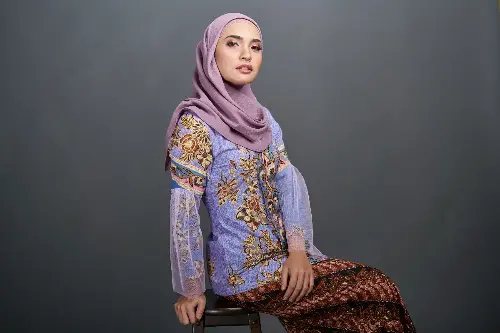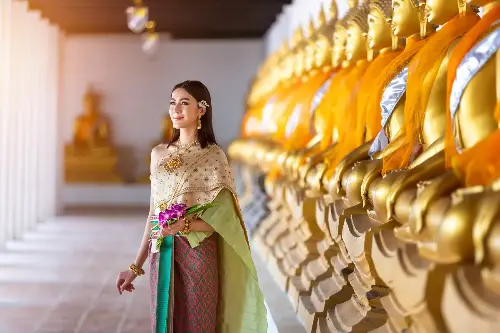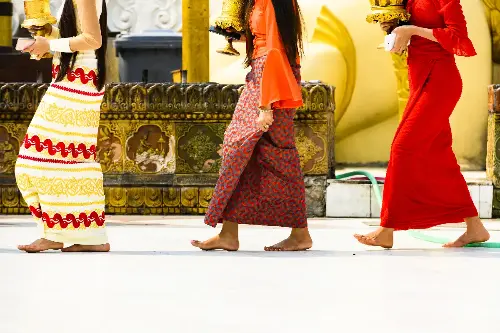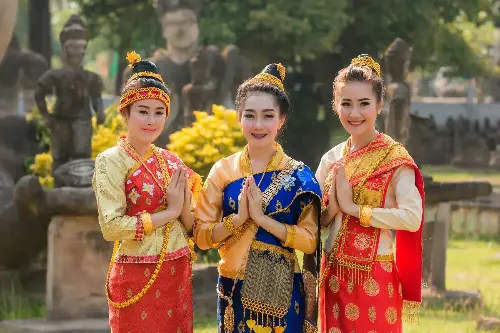South East Asia is a region renowned for its vibrant cultures, intricate art traditions, and a rich tapestry of history that spans millennia. Within this expanse of diversity and color lies a lesser-known yet profoundly captivating aspect of Southeast Asian heritage: its traditional costumes. Each nation possesses a unique attire that not only unveiles the creative spirit of its people but also serves as a testament to their ways of life, customs, and societal values.
The traditional costumes of South East Asia tell a tale of cultural intersections, indigenous craftsmanship, and colonial influences. These garments are not mere pieces of clothing but are emblematic of the identities and histories of the people wearing them. They are crafted with skill and pride, often handwoven and imbued with symbolic motifs that carry significance and narrative.

Starting with the beautiful archipelago of Indonesia, the Batik is a design masterpiece, recognised by UNESCO as a Masterpiece of Oral and Intangible Heritage of Humanity. The art of Batik pertains to cloth that is traditionally made using a manual wax-resist dyeing technique. Each region in Indonesia has distinct patterns that reflect local philosophies and natural environments. The kebaya, which often accompanies the batik sarong, is a traditional blouse-dress combination that is delicately embroidered and subtly form-fitting, presenting a poised elegance unmistakable in Indonesian culture.

Crossing to the neighboring land of Malaysia, one can explore the regal Baju Kurung for ladies and the Baju Melayu for gentlemen. These garments reflect the Islamic influence on the Malay Peninsula, with the Baju Kurung sporting long tunics over long skirts, tailored to preserve modesty yet maintaining a graceful, flowing silhouette. Men’s attire establishes a complementing presence in monochromatic hues or subtle patterns, crowning the look with a traditional cap known as the songkok.

Thailand’s national costume, the Chut Thai, varies in style for men and women, but both exude a regal aura. Women's Chut Thai typically includes the Pha Nung or Chong Kraben, a wrap-around skirt, paired with a fitting blouse and often adorned with shimmering sashes and sinuous silk patterns. Thai traditional attire embraces the glint of gold and the vibrancy of their famous silks, making these garments a spectacle in celebrations like the Songkran festival or a Thai wedding ceremony.

Philippine's Barong Tagalog is a marvel of delicate embroidery and piña fabric – a textile made from pineapple leaf fibers. Reserved for formal occasions, the Barong Tagalog is a long-sleeved shirt with intricate designs sewn into its translucent fabric. Typically worn over an undershirt, this attire accentuates both formality and tropical ease. The women counterpart, the Terno, is striking with its butterfly sleeves and elegant lines, echoing the Filipinos' appreciation of sophistication and colonial influence.

Cross over into Vietnam, and the Ao Dai greets you with its long, fitted tunic worn over trousers. This costume captures the slender lines of the Vietnamese silhouette, complemented with vivid colors and motifs that may reflect regional characteristics or special occasions. The Ao Dai has evolved significantly over time but remains a symbol of Vietnamese femininity and national pride, routinely seen at Tet celebrations and other significant events.

In Myanmar, the Longyi, a cylindrical skirt, is a customary piece for both men and women. Accompanied often by a Htaingmathein, a traditional blouse, for women, the ensemble champions comfort and functionality, with the versatility to be fashions for both informal and formal settings. The fabric choices range from the simple cottons for daily wear to silks and intricacies for ceremonial garb, revealing the people’s practicality and ritualistic nature.

The intricacy doesn't end there. Laos' traditional attire, Sinh for women and Salong for men, dazzles with its weave patterns, which are often tribal-specific and indicate a person’s social standing. Women's Sinh is a tube skirt clinched with a bold and elaborately woven band called the Pa Biang. Laos is known internationally for its silk weaving and the splendid use of organic dyes which enhance the Sinh with natural, earthy charisma.
These traditional costumes paint a picture of South East Asia as a kaleidoscope of cultures, each garment a piece of living art that tells stories of belief, status, and tradition. When witnessing the traditional garb of each nation, one not only sees a piece of fabric but beholds a woven narrative of the land’s soul – its struggles, triumphs, and its ongoing tale of human expression.
As the world becomes increasingly modern, these attires stand as sentinels of history, embodying the vibrant legacy and the enduring craftsmanship of South East Asia. They serve as a reminder that fashion is a form of language, narrating tales of humanity through threads and stitches. To understand South East Asia's couture is to unravel an anthology of its civilization, one costume at a time. It is to witness first-hand the wonders that arise when tradition is tailored, and culture is clothed in the fabric of time.
